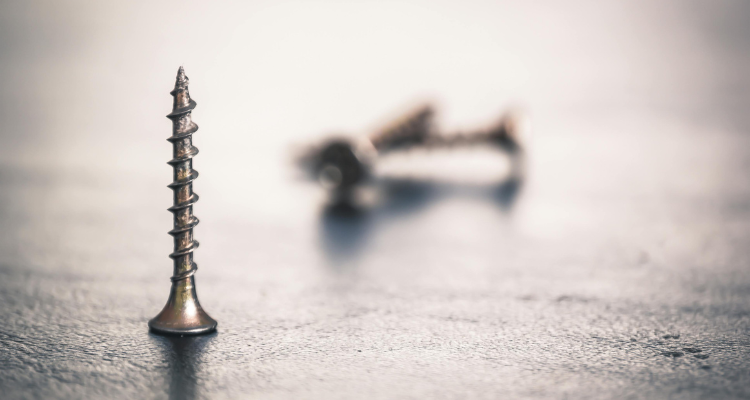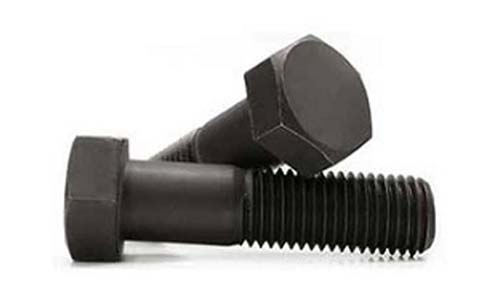For Immediate Release Contact: Dean Francis Vice President, Strategy & Corporate Development LT...
Kryton Metals Blog
How to Measure Thread Size: Decoding Bolt Numbering Systems

Every engineer, machinist, and fabricator has to start somewhere. To those who have been in the industry for a while, the bolt numbering system comes natural to them—they don’t even have to think twice. Some are even able to tell you what size a screw might be just by looking at it. Don’t worry—you won’t be an expert by the end of this article, but you’ll be much more familiarized.
Choosing the right thread size for a bolt or fastener might seem simple, but with so many different standards and numbering systems, it can quickly become frustrating. Have you ever been confused about when to use coarse threads as opposed to fine threads? Or why the threads on wood screws look different than sheet metal screws? The answers may seem obvious, but these questions get asked a lot!
Let’s dive in and make sense of thread measurement so that you can confidently choose the right fastener every time.
THREAD TERMINOLOGY
First, we must simplify and understand basic thread terminology. Let’s use a common imperial fastener (most common in the US) as an example—a ¼”-20 x ½” bolt. The first number is the screw shaft’s largest diameter, which is ¼” in our example.
The second number indicates the threads per inch, or TPI. The easiest way to calculate the threads per inch is to hold a ruler or caliper up to a screw and count the individual threads that fit within an inch of thread. With our example, there are 20 threads that are within an inch. The last number signifies the length of the screw—in our case, the screw is ½” long.
 Photo credits: https://www.fastenal.com/fast/services-and-solutions/engineering/screw-thread-design
Photo credits: https://www.fastenal.com/fast/services-and-solutions/engineering/screw-thread-design
Bolts can get fairly large—all the way up to a 2-½”-8 or more. On the other hand, for screws that are smaller than ¼” in diameter, that value will be listed as a number between 0 and 12—the larger the number, the closer to ¼” in diameter. For example, #8-32 screws would have a diameter of 0.164” with 32 threads in one inch of thread length.
Screws with diameters less than #0 (0.060”) are described by the numbers #00 (0.047”), #000 (0.034”), and even #0000 (0.021”).
THREAD ANGLE
The thread angle is the angle between the flanks, measured in an axial plane section. The thread angle isn’t too vital for our case, but it’s typically 60° in most standards for a good balance between machinability and stress. The thread angle can vary when precise alignment is vital in high-stake applications like aerospace or hydraulic systems—getting the correct angle helps prevent cross-threading while ensuring a tight and secure fit.
METRIC
For metric screws, it’s a bit different. We’ll use an example of M6 x 1mm x 30mm. The “M” indicates the metric system. The number that comes after the “M” determines the diameter of the shaft of the bolt—in our case, it’s 6 mm.
The number in the middle is the pitch, which is the distance from one thread to the next—in our example, the distance from the top of one thread to the top of the next thread is 1 mm. Similarly, the last number tells you about the length of the screw, which is 30 mm in our example.
BOLT GRADES
Bolt grades are determined by the bolt’s specific material as well as the strength of that material. There are three main groups that set the standards for the bolt grading system, but they typically follow the same rule—the harder the material, the higher the bolt strength.
SAE
SAE, or the Society of Automotive Engineers, sets widely used standards for inch-based fasteners. The SAE J429 standard defines specifications for bolts, screws, studs, and similar parts, with grades marked by radial lines on the bolt head that indicates its strength.
- Grade 2: These bolts are suitable for non-critical applications and are widely used in generic applications that don’t face extreme stress or temperature.
- Grade 5: These bolts are common in military and heavy machinery applications where moderate stress resistance is required.
- Grade 8: This grade uses high-strength carbon or alloy steel, ideal for demanding applications in military, heavy machinery, and aerospace where durability is essential.
ISO
ISO, or the International Standards Organization, sets the metric standard for bolts, screws, and studs with ISO 898-1, covering 10 property classes for carbon and alloy steel fasteners. Each bolt's property class is marked with numbers on its head.
- Property Class 8.8: Medium-strength, comparable to SAE Grade 5. These bolts are popular in military, heavy machinery, and especially automotive applications.
- Property Class 10.9: High-strength, similar to SAE Grade 8, making it suitable for demanding environments like military, aerospace, and heavy machinery.
- Property Class 12.9: Among the strongest available, ideal for critical applications like engine parts and motor casings where maximum strength is essential.
ASTM
ASTM, short for the American Society for Testing and Materials, developed ASTM A307, which specifies two grades for bolts and studs: Grade A and Grade B, marked as 307A or 307B on bolt heads.
- ASTM A307 Grade A: Low- to medium-strength carbon steel bolts, primarily used in non-critical applications.
- ASTM A307 Grade B: Medium-strength carbon steel bolts, ideal for flanged joints in piping systems.
COARSE THREAD VS. FINE THREAD
When choosing the right fastener for a project, understanding the difference between coarse and fine thread types can make a significant impact on performance and durability. This choice often comes down to three main thread designations:
- UNC (Unified National Coarse): Coarse threads are commonly used in applications where quick assembly is needed, and they provide better resistance to stripping and cross-threading. They’re widely used for bolts in softer materials or environments where debris could impact finer threads. In our example, ¼”-20 is coarse-threaded.
- UNF (Unified National Fine): Fine threads have a higher TPI than coarse threads, providing greater tensile strength and vibration resistance, though they are more prone to stripping. They’re ideal for applications needing precision and strength in tighter spaces, like automotive or aerospace settings. In our example, ¼”-28 would be fine-threaded.
- UNEF (Unified National Extra Fine): These have even finer threads than UNF, with the highest TPI, making them suitable for very thin materials or applications requiring precision adjustments. They’re less common but often used in specialized machinery or electronics. In our example, ¼”-32 would be extra fine-threaded.
WOOD SCREWS VS. SHEET METAL SCREWS
Wood screws are typically more coarse because they need to grip softer, fibrous material. The coarse threads allow for a stronger hold in wood by displacing more material as they’re driven in, creating a tighter grip. This is vital since it prevents loosening and allowing for easier removal and reinsertion without damaging the wood.
On the other hand, sheet metal screws are often fine-threaded for securing thinner, denser materials. Fine threads provide a stronger hold in metal by distributing the load more evenly across a greater number of threads. This design also minimized the chance of stripping, which is important in thinner materials like sheet metal. Fine threads in metal screws allow for a more precise, stable fit that withstands vibration and stress in industrial or mechanical applications.
WRAPPING UP
Choosing the right thread type can make a big difference in the strength, durability, and longevity of your project. Whether it’s the coarse hold of wood screws, the precision of sheet metal screws, or the unique fit of the threads, each type serves a specific purpose to match its application.
For a closer look at the best fasteners for your next job, contact us today for expert guidance and fastener recommendations.

.jpg?height=200&name=kryton-jan5_announcement%20(1).jpg)

